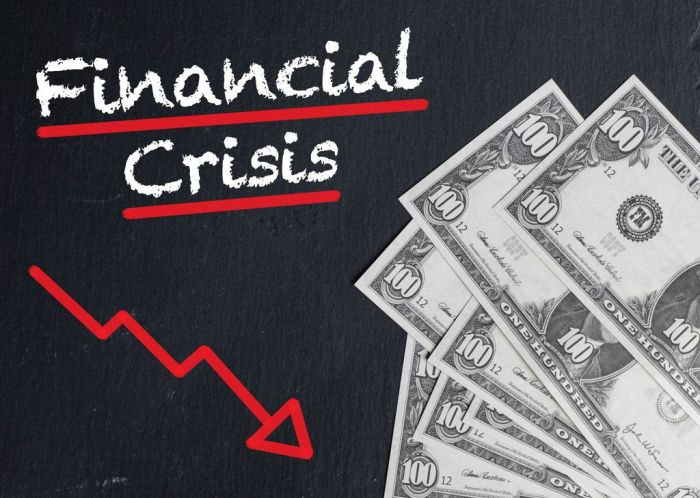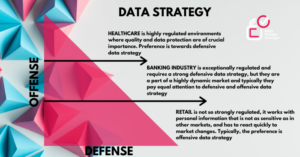
Financial risk modeling is an essential aspect of modern finance, serving as a critical tool for businesses to navigate uncertainties and make informed decisions. It encompasses various methodologies and approaches that help quantify risks, allowing organizations to understand better the potential financial implications of their strategies.
This discipline not only aids in identifying diverse types of financial risks but also plays a significant role in fostering business innovation and enhancing management practices, making it a pivotal part of both small startups and large enterprises.
Financial Risk Modeling Fundamentals
Financial risk modeling is a critical aspect of financial management that involves identifying, analyzing, and quantifying potential financial risks that organizations may face. This practice helps businesses anticipate adverse events and devise strategies to mitigate their impact. Its significance in finance cannot be overstated, as it provides a framework for informed decision-making and enhances the stability of financial systems.Various types of financial risks can be modeled, including market risk, credit risk, operational risk, and liquidity risk.
Each risk type presents unique challenges and requires specific modeling techniques to assess their potential impacts accurately. The key components of financial risk modeling include data analysis, statistical methods, and risk assessment frameworks. Common methodologies used in financial risk modeling are Value at Risk (VaR), stress testing, and scenario analysis, which provide insights into how different variables can affect an organization’s financial health.
Business Innovation and Financial Risk
Financial risk modeling plays a crucial role in driving business innovation by enabling organizations to develop new products and services that meet market demands while managing associated risks. By leveraging insights gained from risk modeling, businesses can identify opportunities for innovation that align with their risk appetite and strategic goals.Innovative financial products, such as derivatives and insurance products, have been developed through advanced risk modeling techniques.
For instance, the creation of catastrophe bonds enables insurers to transfer specific risks to investors, providing a new funding source while mitigating potential losses. Strategies for integrating risk modeling into new business ventures include conducting thorough market research, employing agile methodologies, and fostering a culture that embraces data-driven decision-making.
International Business and Financial Risk
Global market fluctuations significantly impact financial risk modeling, as changes in exchange rates, interest rates, and geopolitical events can alter risk profiles for businesses operating internationally. As companies expand their reach across borders, they must adapt their risk modeling practices to account for the complexities of diverse markets.Financial risk modeling practices vary across countries due to regulatory differences, market maturity, and cultural influences.
For example, while European firms may focus on stringent regulatory compliance, companies in emerging markets might prioritize rapid growth and innovation. Cultural differences also play a role in assessing financial risk internationally, as risk tolerance and attitudes toward uncertainty can differ widely among regions.
Business Interviews and Financial Risk Expertise
When interviewing candidates with expertise in financial risk modeling, it is crucial to assess both their theoretical knowledge and practical experience. Guidelines for conducting these interviews include evaluating candidates’ understanding of key concepts, their familiarity with various modeling techniques, and their ability to apply these methods in real-world scenarios.Key questions to consider when interviewing candidates may cover topics such as:
- Explain the difference between market risk and credit risk.
- Describe a situation where you successfully used risk modeling to inform a business decision.
- What statistical tools are you proficient in for risk assessment?
Evaluating practical experience in financial risk analysis can involve discussing past projects, the methodologies employed, and the outcomes achieved, ensuring that candidates possess both theoretical and practical competencies.
Job Search Techniques for Risk Management Professionals
For job seekers in the financial risk management sector, developing effective strategies is essential to stand out in a competitive job market. Networking is one of the most powerful tools available, allowing professionals to connect with industry leaders and gain insights into job openings and market trends.Networking tips for professionals in financial risk modeling include:
- Attend industry conferences and workshops to meet other professionals.
- Participate in online forums and webinars to expand your knowledge and connections.
- Utilize platforms like LinkedIn to engage with industry groups and share your expertise.
Essential skills to highlight in resumes for risk management roles encompass proficiency in quantitative analysis, knowledge of risk modeling software, and strong communication abilities.
Business Management and Financial Risk Strategies
Financial risk modeling is vital for effective business management, as it enables organizations to identify potential risks and devise strategies to address them proactively. Incorporating risk assessment into decision-making processes helps businesses mitigate losses and seize opportunities.Methods to incorporate risk assessment into business decision-making include integrating risk modeling into strategic planning, conducting regular risk assessments, and utilizing key performance indicators (KPIs) to monitor financial health.
Relevant KPIs related to financial risk include:
- Debt-to-equity ratio
- Liquidity ratios
- Value at Risk (VaR)
Marketing Direct Strategies for Financial Products

Marketing strategies for promoting financial products that utilize risk modeling must emphasize the importance of risk assessment and the value it brings to consumers. Campaigns should convey how risk modeling enhances product reliability and protects customers from potential financial losses.A marketing campaign could highlight innovative financial products such as risk-managed investment funds or personalized insurance solutions that leverage data-driven insights for better customer outcomes.
Identifying target audience segments that may benefit from these insights is crucial, and might include:
- Small business owners seeking financial stability
- Investors looking for tailored financial products
- Individuals concerned about future economic uncertainties
Business Networking and Financial Risk Professionals
Networking is paramount for financial risk professionals, as it fosters collaboration, knowledge sharing, and professional growth within the industry. Building relationships within the risk management community can lead to new opportunities and partnerships.Tips for building relationships in the risk management community include:
- Join professional associations related to financial risk management.
- Engage in mentorship programs for knowledge exchange.
- Participate in community service or volunteering activities to connect with others.
Industry events and platforms for networking opportunities may include conferences, symposiums, and online forums dedicated to financial risk and management.
Business Outsourcing and Financial Risk Management
Outsourcing can significantly impact financial risk modeling processes, offering the potential for cost savings and access to specialized expertise. However, it also presents challenges related to risk management oversight and data security.The advantages of outsourcing risk management functions include:
- Access to expert knowledge and technology.
- Increased focus on core business activities.
- Reduction of operational costs.
Conversely, challenges may involve managing communication with third-party vendors and ensuring compliance with regulatory standards. Best practices for managing outsourced financial risk projects encompass setting clear expectations, conducting regular performance reviews, and maintaining open lines of communication.
Business Presentations on Financial Risk Topics
Designing a presentation framework for discussing financial risk modeling strategies requires clear objectives and a structured approach. Effective presentations should aim to inform, engage, and inspire action among the audience.Tips for effectively communicating complex risk concepts to non-experts include:
- Use visual aids such as charts and diagrams to simplify data.
- Practice storytelling to illustrate real-life scenarios related to financial risks.
- Encourage audience participation through Q&A sessions or interactive discussions.
Organizing content to engage audiences in financial risk discussions can involve breaking down complex ideas into manageable sections and using relatable examples to maintain interest.
Business Productivity Enhancements through Risk Modeling
Financial risk modeling can enhance business productivity by streamlining processes and improving decision-making efficiency. Organizations that implement effective risk modeling practices often experience increased operational efficiency and reduced costs.Tools and software that facilitate risk management and improve efficiency include:
- Quantitative risk assessment tools
- Risk management software solutions
- Data analytics platforms
Best practices for implementing risk modeling in everyday business operations involve training staff, utilizing data-driven insights for continuous improvement, and regularly reviewing and updating risk models.
Restaurant Industry and Financial Risk Management
The restaurant industry faces unique financial risks, including fluctuating ingredient costs, labor shortages, and changing consumer preferences. Applying risk modeling to restaurant operations can help businesses navigate these challenges effectively.Strategies for applying risk modeling to restaurant operations include:
- Conducting cost-benefit analyses for menu pricing.
- Implementing dynamic staffing models based on peak hours.
- Utilizing predictive analytics to forecast demand and manage inventory.
Examples of successful risk management in restaurant businesses may involve well-established chains that adapt their menus and pricing based on market trends and customer feedback, ensuring sustained profitability.
Resumes and Cover Letters for Risk Management Roles
Crafting resumes tailored to financial risk positions requires a focus on relevant skills, experiences, and accomplishments. Highlighting key competencies and demonstrating a strong understanding of financial risk concepts are essential.Examples of effective cover letter content for risk management candidates should emphasize:
- Specific achievements in previous roles related to risk modeling.
- Familiarity with industry standards and regulatory requirements.
- A commitment to continuous professional development in risk management practices.
Common mistakes to avoid in applications for financial risk roles include vague descriptions of responsibilities, lack of quantifiable achievements, and failure to customize each application for the specific role.
Business Retail and Financial Risk Considerations
Financial risk modeling plays a pivotal role in retail business strategies, enabling retailers to understand and mitigate potential risks associated with inventory management, pricing strategies, and market competition.To mitigate risks using data-driven insights, retailers can:
- Analyze sales trends to adjust inventory levels proactively.
- Implement pricing strategies based on competitive analysis and consumer behavior.
- Utilize customer segmentation data to inform marketing efforts.
Key metrics for assessing financial risks in retail environments include sales forecasts, inventory turnover rates, and customer acquisition costs.
Risk Management in Sales Strategies
Integrating risk assessment into sales processes is crucial for optimizing performance and minimizing potential losses. A well-structured risk management approach can enhance sales strategies and improve overall outcomes.Techniques for training sales teams on financial risk awareness may include:
- Workshops on understanding market volatility and its impact on sales.
- Case studies highlighting successful risk management in sales.
- Regular updates on regulatory changes affecting sales practices.
Creating a framework for evaluating sales strategies based on risk modeling involves setting clear performance metrics and regularly assessing alignment with risk tolerance levels.
Sales Management and Financial Risk Implications
The relationship between sales performance and financial risk is intricate, as fluctuations in sales can directly impact a company’s financial health. Sales managers can utilize risk modeling to enhance team performance and mitigate potential risks.Utilizing risk modeling in sales management involves:
- Assessing potential market risks and adjusting sales targets accordingly.
- Training teams on recognizing and responding to financial risks in proposals.
- Implementing data-driven decision-making to optimize sales strategies.
Identifying potential risks in sales forecasting, such as overestimating demand or failing to account for market changes, is essential for maintaining accurate projections and developing contingency plans.
Sales Teleselling and Risk Management Techniques
Financial risk awareness is crucial in teleselling environments, where sales professionals must navigate uncertainties while engaging with potential clients. Understanding the risks inherent in remote sales approaches can lead to more effective strategies.Strategies for managing risks associated with remote sales include:
- Implementing robust data protection measures to safeguard client information.
- Training sales teams on compliance with industry regulations.
- Utilizing technology to monitor sales performance and identify potential compliance risks.
Risks specific to teleselling in financial services may include miscommunication with clients, data breaches, and challenges in building trust with customers over the phone.
Business Security and Financial Risk
The intersection of business security and financial risk modeling is increasingly relevant in today’s digital landscape. Financial institutions face significant security risks that can jeopardize their financial stability.Key security risks affecting financial institutions include:
- Cybersecurity threats and data breaches.
- Fraudulent activities targeting customers and businesses.
- Operational disruptions caused by inadequate security measures.
Strategies for protecting financial data through effective risk management encompass implementing advanced cybersecurity protocols, conducting regular security audits, and fostering a culture of compliance and risk awareness within the organization.
Small Business Financial Risk Management
Small businesses often face distinct financial risk challenges, including limited access to capital, market volatility, and fluctuating customer demand. Implementing risk modeling effectively can help these businesses navigate uncertainties and build resilience.Methods for small businesses to implement risk modeling include:
- Conducting regular risk assessments tailored to their specific operations.
- Utilizing simple risk modeling tools to evaluate potential scenarios.
- Engaging with local financial advisors for guidance on risk management practices.
A checklist for small businesses to assess their financial risks might include reviewing cash flow forecasts, evaluating credit risk, and analyzing market trends.
Solo Professionals and Financial Risk Strategies
Solo professionals can benefit from managing their financial risks through tailored strategies that align with their unique business models. Understanding the intricacies of financial risk modeling is essential for maintaining a sustainable freelance career.Strategies for solo professionals to manage their financial risks include:
- Setting aside emergency funds to cover unexpected expenses.
- Implementing contracts that clearly Artikel payment terms and conditions.
- Utilizing project management tools to track income and expenses effectively.
Resources available for solo professionals in risk management may include online courses, professional associations, and mentorship opportunities to enhance their skills in financial risk assessment.
Strategic Planning and Financial Risk Assessment
Financial risk modeling supports strategic business planning by providing insights that inform long-term decision-making. Organizations can leverage risk assessments to align their strategies with potential future scenarios.Examples of strategic initiatives informed by risk assessments could involve:
- Expanding into new markets based on risk-return analyses.
- Investing in technology to mitigate operational risks.
- Developing contingency plans to address potential economic downturns.
Methods for integrating risk considerations into long-term planning involve conducting regular reviews of risk models and ensuring that strategies remain adaptive to changing market conditions.
Team Building and Risk Awareness
Fostering a risk-aware culture within teams is vital for effective risk management. Team-building strategies can enhance collaboration and promote a shared understanding of financial risks across the organization.Strategies for fostering a risk-aware culture include:
- Conducting regular training sessions on risk management principles.
- Encouraging open discussions about risk assessment findings.
- Creating cross-functional teams to address specific risk challenges.
Team-building exercises focused on financial risk education might involve case studies, simulation games, or brainstorming sessions aimed at identifying potential risks and developing mitigation strategies.
Venture Capital and Financial Risk Evaluation
Financial risk modeling plays a significant role in venture capital investments, as investors must assess the potential risks associated with funding startups. Understanding the nuances of financial risk evaluation is crucial for making informed investment decisions.Venture capitalists assess financial risks in startups by evaluating factors such as:
- Market potential and competitive landscape.
- Financial projections and revenue models.
- Management team’s experience and track record.
Key financial metrics that venture capitalists monitor include burn rate, customer acquisition cost, and projected return on investment, ensuring a comprehensive understanding of the startup’s financial health.
Workplace Communication in Financial Risk Contexts
Effective communication strategies are essential for discussing financial risks within organizations. Clear communication fosters understanding and promotes a proactive approach to risk management.Guidelines for presenting financial risk findings to stakeholders may include:
- Utilizing visual aids to illustrate key points.
- Tailoring the presentation to the audience’s level of expertise.
- Encouraging feedback and questions to facilitate discussion.
Fostering open discussions about financial risk across teams involves creating a culture that values transparency and encourages team members to share insights and concerns related to risk management.
Workplace Safety and Financial Risks

Financial risks can significantly impact workplace safety initiatives, as organizations must allocate resources effectively to ensure employee well-being. Integrating financial risk assessments into safety programs is essential for maintaining a safe working environment.Strategies for integrating financial risk assessments into safety programs include:
- Conducting regular safety audits to identify potential risks.
- Allocating budget resources based on risk assessments to enhance safety measures.
- Implementing employee training programs focused on risk awareness and safety protocols.
Creating a framework for evaluating safety measures based on financial risk modeling involves setting performance metrics and regularly reviewing the effectiveness of safety initiatives in mitigating financial risks.
Closure
In conclusion, understanding financial risk modeling is vital for any organization aiming to thrive in an unstable economic landscape. By leveraging these strategies, businesses can not only mitigate risks but also unlock new opportunities for growth and innovation, ensuring they remain resilient and competitive.
FAQ Summary
What is financial risk modeling?
Financial risk modeling is the process of using quantitative methods to assess and manage financial risks faced by an organization.
Why is financial risk modeling important?
It helps businesses make informed decisions by quantifying potential risks, leading to better risk management and strategic planning.
What types of financial risks can be modeled?
Commonly modeled risks include market risk, credit risk, operational risk, and liquidity risk.
How can financial risk modeling drive innovation?
By understanding and managing risks, businesses can develop innovative products and services that better meet market needs.
What skills are essential for professionals in financial risk modeling?
Essential skills include analytical thinking, proficiency in statistical software, knowledge of financial regulations, and strong communication abilities.





